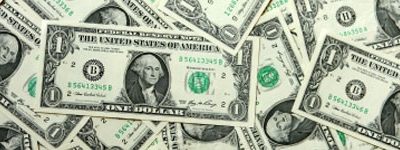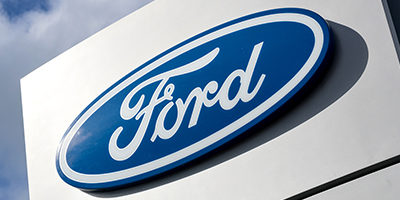%
Jubak’s Picks Performance 1997-2019
Jubak’s Picks
Buy and hold? Not really.
Short-term trading?
Not by a long shot.
So what is the stock-picking style of The Jubak’s Picks portfolio?
Click to expand...
Click to View the Jubak’s Picks Portfolio
I try to go with the market’s momentum when the trend is strong and the risk isn’t too high, and I go against the herd when the bulls have turned piggy and the bears have lost all perspective. What are the results of this moderately active — the holding period is 12 to 18 months — all-stock portfolio since inception in May 1997? A total return of 584% as of December 31, 2019. That compares to a total return on the S&P 500 stock index of 335% during the same period.
%
Top 50 Stocks Performance 2019
Top 50 Stocks
This long-term, buy-and-holdish portfolio was originally based on my 2008 book The Jubak Picks.
Trends that are strong enough, global enough, and long-lasting enough to surpass stock market averages.
Click to expand...
Click to view the Top 50 Stocks Portfolio
In The Jubak’s Picks Portfolio I identified ten trends that were strong enough, global enough, and long-lasting enough to give anyone who invested in them a good chance of beating the stock market averages.
To mark the publication of my new book on volatility, Juggling with Knives, and to bring the existing long-term picks portfolio into line with what I learned in writing that book and my best new ideas on how to invest for the long-term in a period of high volatility, I’m completely overhauling the existing Top 50 Picks portfolio.
You can buy Juggling with Knives at bit.ly/jugglingwithknives
%
Dividend Income Performance 2021
Dividend Income
Every income investor needs a healthy dose of dividend stocks.
Why bother?
Why not just concentrate on bonds or CDs?
Click to expand...
Click to view the Dividend Income Portfolio
Because all the different income-producing assets available to income investors have characteristics that make them suited to one market and not another. You need all of these types of assets if you’re going to generate maximum income with minimum risk as the market twists and turns.
For example: bonds are great when interest rates are falling. Buy early in that kind of market and you can just sit back and collect that initial high yield as well as the capital gains that are generated as the bonds appreciate in price with each drop in interest rates.
CDs, on the other hand, are a great way to lock in a yield with almost absolute safety when you’d like to avoid the risk of having to reinvest in an uncertain market or when interest rates are crashing.
Dividend stocks have one very special characteristic that sets them apart from bonds and CDs: companies raise dividends over time. Some companies raise them significantly from one quarter or year to the next. That makes a dividend-paying stock one of the best sources of income when interest rates start to rise.
Bonds will get killed in that environment because bond prices will fall so that yields on existing bonds keep pace with rising interest rates.
But because interest rates usually go up during periods when the economy is cooking, there’s a very good chance that the company you own will be seeing rising profits. And that it will raise its dividend payout to share some of that with shareholders.
With a dividend stock you’ve got a chance that the yield you’re collecting will keep up with rising market interest rates.
But wouldn’t ya know it?
Just when dividend investing is getting to be more important—becoming in my opinion the key stock market strategy for the current market environment—it’s also getting to be more difficult to execute with shifting tax rates and special dividends distorting the reported yield on many stocks.
I think there’s really only one real choice—investors have to pull up their socks and work even harder at their dividend investing strategy. That’s why I revamped the format of the Dividend Income portfolio that I’ve been running since October 2009. The changes aren’t to the basic strategy. That’s worked well, I think, and I’ll give you some numbers later on so you can judge for yourself. No, the changes are designed to do two things: First, to let you and me track the performance of the portfolio more comprehensively and more easily compare it to the performance turned in by other strategies, and second, to generate a bigger and more frequent roster of dividend picks so that readers, especially readers who suddenly have a need to put more money to work in a dividend strategy, have more dividend choices to work with.
Why is dividend investing so important in this environment? I’ve laid out the reasons elsewhere but let me recapitulate here. Volatility will create repeated opportunities to capture yields of 5%–the “new normal” and “paranormal” target rate of return–or more as stock prices fall in the latest panic. By using that 5% dividend yield as a target for buys (and sells) dividend investors will avoid the worst of buying high (yields won’t justify the buy) and selling low (yields will argue that this is a time to buy.) And unlike bond payouts, which are fixed by coupon, stock dividends can rise with time, giving investors some protection against inflation.
The challenge in dividend investing during this period is using dividend yield as a guide to buying and selling without becoming totally and exclusively focused on yield. What continues to matter most is total return. A 5% yield can get wiped out very easily by a relatively small drop in share price.
Going forward, I will continue to report on the cash thrown off by the portfolio—since I recognize that many investors are looking for ways to increase their current cash incomes. But I’m also going to report the total return on the portfolio—so you can compare this performance to other alternatives—and I’m going to assume that an investor will reinvest the cash from these dividend stocks back into other dividend stocks. That will give the portfolio—and investors who follow it—the advantage of compounding over time, one of the biggest strengths in any dividend income strategy.
What are some of the numbers on this portfolio? $29,477 in dividends received from October 2009 through December 31, 2013. On the original $100,000 investment in October 2009 that comes to a 29.5% payout on that initial investment over a period of 39 months. That’s a compound annual growth rate of 8.27%.
And since we care about total return, how about capital gains or losses from the portfolio? The total equity price value of the portfolio came to $119,958 on December 31, 2012. That’s a gain of $19,958 over 39 months on that initial $100,000 investment or a compound annual growth rate of 5.76%.
The total return on the portfolio for that period comes to $49,435 or a compound annual growth rate of 13.2%.
How does that compare to the total return on the Standard & Poor’s 500 Stock Index for that 39-month period? In that period $100,000 invested in the S&P 500 would have grown to $141,468 with price appreciation and dividends included.) That’s a total compounded annual rate of return of 11.26%.
That’s an annual 2 percentage point advantage to my Dividend Income portfolio. That’s significant, I’d argue, in the context of a low risk strategy.
Portfolio Related Posts
Please watch my YouTube video: Quick Pick Conoco Phillips
I’m starting up my videos again–this time using YouTube as a platform. My eighty-fifth YouTube video “QuickPick Conoco Phillips” went up today.
Performance report for Dividend Portfolio for 2021–total return for 2021 was 18.59% and dividend yield was 3.13%
For 2021 the total return–that’s price appreciation plus dividends–came to 18.59%. That was a slight improvement on the 15.71% total return for 2020. The dividend yield for the portfolio in 2021 came to 3.13%. That was a slight drop from the 3.43% yield in 2020.
Ford gains 11.7% today on news that it will double production capacity of F-150 electric pickup
As of the close in New York today Ford Motor (F) shares were up 11.67% after the company announced it would nearly double production capacity to meet demand for its upcoming F-150 Lightning electric pickup truck. The price of $24.31 is a 21-year high for Ford’s stock.
With sell of Apple tomorrow I’ll start to unwind my end of the year rally buys
When I bought shares of Apple (AAPL) in my Jubak Picks and Volatility Portfolios, I was looking for gains from the end of the year rally (which kind of fizzed out) and the traditional Santa Claus rally (which came through as expected) to drive shares higher in the short term. Since that November 23, 2021 pick, shares of Apple, as of the close today January 4, were up 12% to $179.70, just above my $179 target price for this short-term trade.
Evergrande shares suspended in Hong Kong; reports say company ordered to demolish 30 buildings
Shares in China’s Evergrande Group have been suspended from trading in Hong Kong, the property developer announced on Monday. The company did not give a reason. Leaving us to speculate and there’s plenty to speculate with. Evergrande missed new coupon payments of $255 million due last Tuesday–and that’s just the beginning
Time to shift gears on your selling strategy (if any) as we move to 2022 from 2021–my last two sells for 2021 are Itau Unibanco and Cemex
We’ve got just two more trading sessions left in 2021. And then it’s on to 2022. Which means you should have wrapped up–or making any last minute sells–to harvest tax losses from 2021 in the next day or so. Of course, being the tax-savvy investor that you are, you have postponed taking profits on big winners in 2021 until 2022. (I’ll have an update on January profit-taking in the week after New Years.)
Ford Motor moves strongly higher on news of huge pre-orders for electric F-150 Lightning pickup
Ford Motor (F) CEO Jim Farley said yesterday, December 9, that pre-orders for the soon-to-launch F-150 Lightning pickup truck are so great that it had to stop taking reservations. Ford shares were up 9.81% today, Friday, December 10 as of the New York close.
CVS Health raises dividend and 2022 revenue guidance
CVS Health (CVS) will raise its annual dividend by 10% to $2.20 from $2.00 effective with the dividend payout scheduled for February 1. The company has also authorized a $10 billion share buyback program. The company also raised guidance for the full 2021 year to revenue of at least $290.3 billion and earnings of at least $8.00 a share.










